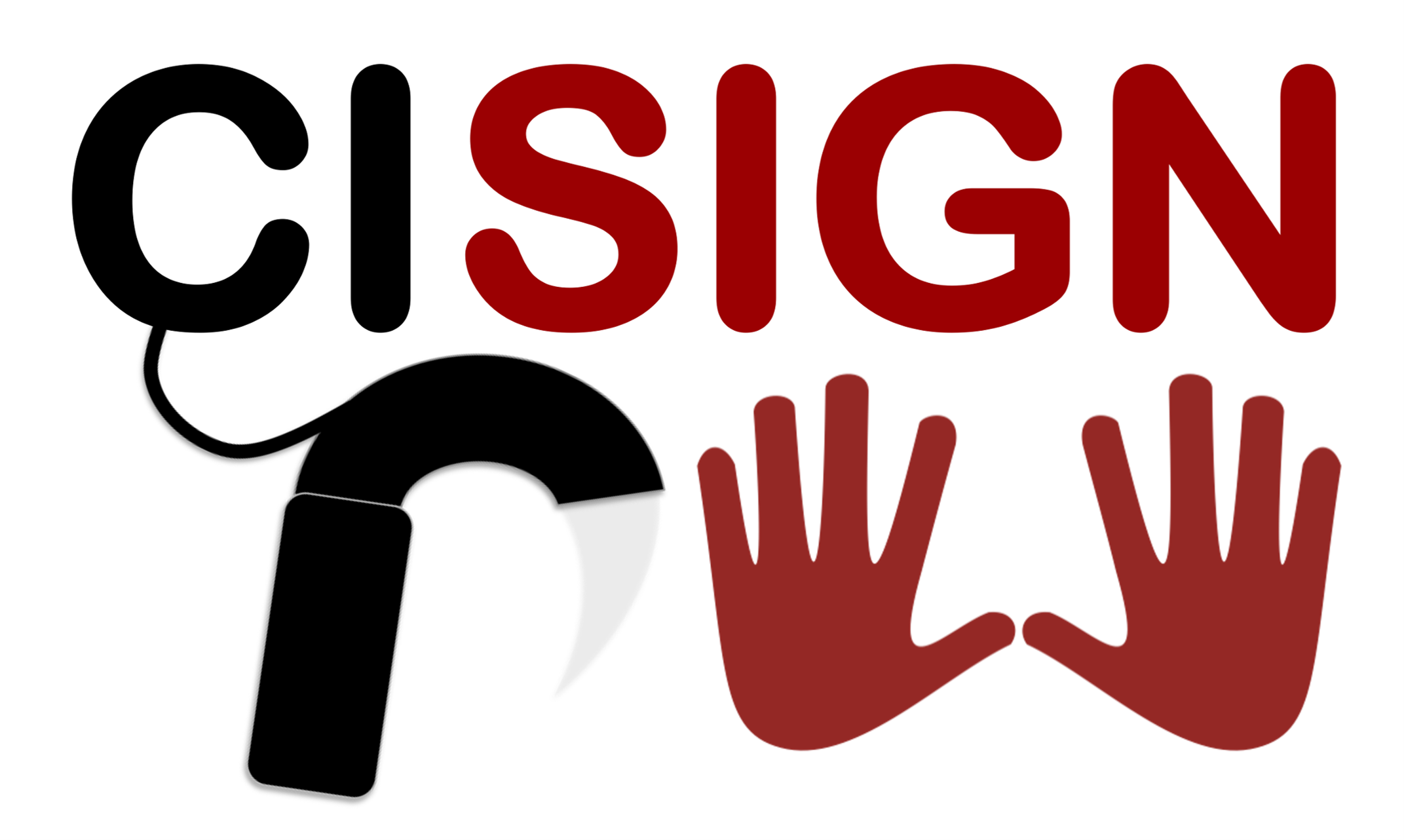CI SIGN CAMPAIGN
The CI SIGN Campaign is an initiative by Iona University IACD and Language First. It is a collaborative effort to raise awareness about the importance of using a natural signed language like ASL with deaf children who have cochlear implants (CIs). Frequently, deaf children with CIs are not exposed to signed language. This is because of a few prevailing beliefs: one asserts that the CIs effectively “restore” hearing and, therefore, a visual language like ASL is unnecessary. The other misconception is that implanted deaf children must prioritize learning to listening with the device, and any exposure to a visual language will “hijack” that focus. However, current evidence in neuroscience and language development, as well as firsthand evidence from families debunks these beliefs.
Having cochlear implants should never preclude a deaf child from being exposed to a robust natural signed language like ASL. First, there is huge variability in children’s success with the device (Niparko et al., 2010). This means that it is difficult to provide a prognosis for a particular child’s outcome because success with the device is so unpredictable. Additionally, cochlear implants are medical devices that do not guarantee any specific outcome (Szarkoswki, 2019). Thus, implanting a deaf child does not ensure that they will acquire oral language through their CI. The device, like any other man-made medical tool, must interface with the human body. Indeed, despite extensive intervention from experienced practitioners, many cochlear implant users never achieve optimal success with their devices (Pisoni et al., 2017). Given these unknowns, providing an implanted child with a signed language can help ensure that they acquire at least one complete language from birth.
The cochlear implantation candidacy, surgery, and activation process can take months. During this time, it is critical that the deaf child continues to receive language in order to promote brain development. A first language must be acquired in the first few years of life, and if a deaf child is waiting for an implant and not exposed to a signed language, they are missing critical brain food. A natural signed language like ASL can help ensure the child is getting that vital linguistic input during that time. Additionally, providing a signed language prior to implantation can help the child learn oral language through the device, as it provides a linguistic foundation on which to make sense of the novel electrical stimulation. A deaf child whose brain has a foundation for language, via a signed language, is better able to learn to interpret the stimulation from the implant as linguistically meaningful.
Help us spread the word by:
Posting a video of your deaf child with a cochlear implant signing
Explaining why a signed language like ASL is important to your child
Creating social media posts to show your support for the campaign
Sharing resources that help explain why it is vital to sign with implanted deaf children
Using the hashtag #cisign on all relevant social media posts
Resources:
Resource | Determining the Need for a Signed Language for DHH Children with Listening Devices
Course | Neuroplasticity and Cochlear Implants: Clinical Implications
Article | Why Sign Language is Vital for all Deaf Babies, Regardless of Cochlear Implant Plans
Real world application:
The cochlear implant MAPping fiasco in Australia is a tragic example of why cochlear implants cannot be the sole tool or intervention for deaf children to acquire language. In August of 2023, it was announced that hundreds of deaf children in Australia had their cochlear implants incorrectly programmed. Not only were their MAPs insufficient to provide access to oral language, but they went through years of therapy services without a single provider noticing. This massive blunder has resulted in significant language deprivation for hundreds of children, with little education or support for their families.
Recommended readings:
CONTACT US
Michelle Veyvoda, PhD, CCC-SLP is a speech-language pathologist and the co-director of Iona University’s IACD (www.iona.edu/IACD). She received her Master’s degree at Gallaudet University and has worked with deaf and hard of hearing children in schools for the deaf, auditory-oral centers, and in home-based early intervention. Dr. Veyvoda is a tenured professor and teaches undergraduate and graduate classes in aural (re)habilitation. Her research focuses on the clinical preparedness of speech pathologists serving deaf and hard of hearing children.
Amanda Howerton-Fox, PhD is the co-founder and co-director of Iona University’s IACD (www.iona.edu/IACD). She is a former teacher of the deaf and certified literacy specialist. Amanda is an associate professor at Iona, and her research and advocacy focuses on the critical importance of early language access for deaf and hard of hearing children.
Kimberly Ofori-Sanzo, SLPD, CCC-SLP, BCS-CL, is a speech-language pathologist who earned her Master’s from Gallaudet University. She is committed to educating parents and professionals on the neurological effects of a late or incomplete first language acquisition for Deaf and hard of hearing children. She is the founder of Language First and has many years of experience working at a school for the Deaf.
Kinya Embry-Wright, PhD, CCC-SLP, began her career at a school for the Deaf and is now an SLP in the public schools. She is also a PhD candidate at the University of Kentucky, where her research interests focus on language development in Deaf and hard of hearing children and the impact of American Sign Language as a first language.


